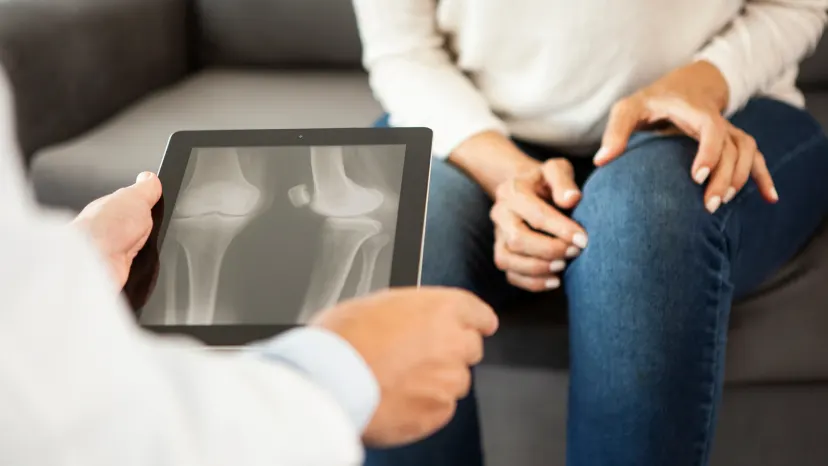Knee pain
Introduction
Your knees help you walk, run, ride your bike, bend, sit, stand, and move in every possible way.
So, when you experience knee pain, many of those activities can quickly become difficult and less enjoyable.
Is knee pain just an inevitable part of aging? Or are there ways to care for your knees that'll help you avoid pain altogether?
Find out some of the common causes of knee pain, the types of exercises that may help or hurt, and when it may be time to get treatment.
If you're experiencing knee pain, talk with your healthcare provider (HCP) as soon as possible, so you can get the relief you need to live and move more comfortably.
Knee pain causes

Can knee pain be caused by running or other workouts? What about walking? How about wearing the wrong shoes? Find out what the experts have to say about knee pain and what may be putting you at a higher risk.
Knee pain symptoms
Depending on the cause, you might only have knee pain while running or bending, climbing stairs, walking, or sitting. It may come as a sharp burst or a dull ache. You may have pain at the back of your knee, pain on the inside of the joint, or pain throughout the joint. Regardless, you'll know it when you feel it. Learn what these symptoms may mean.
Knee pain diagnosis

When diagnosing knee pain, your HCP might ask you questions about recent injuries, when the pain started, what you were doing at the time, and when it hurts most. What about imaging tests, like X-rays, CT scans, or MRIs? Learn what to expect as your HCP helps you find the root of the problem.
Knee pain treatments
Just as knee pain can have many causes, there are also many treatment options depending on your diagnosis. Will you need to wear a knee brace? Are there certain medications or exercises for knee pain? What about surgery or physical therapy? Read more about some of the treatments for knee pain.





